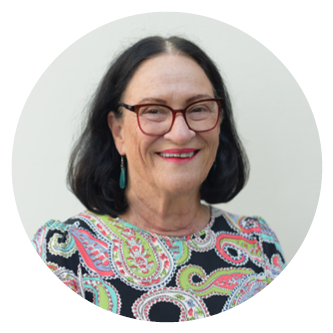GPs and home-based palliative care
An article written by Professor Liz Reymond
Death is a universal health outcome; we are all going to do it. While most people say they would prefer to be cared for and to die at home, usually this outcome is not achieved. [1] Further, while most people say they not afraid of being dead, many are afraid of how they will get there. Palliative care can do much to satisfy peoples’ choices about place of care and alleviate fear and associated suffering. GPs play a pivotal role in providing that care but need resources to augment their practice. [1] Such resources facilitate a ‘good death’ defined in the context of each individual’s life.
GPs and palliative care
As the population ages the number of patients that a GP cares for who require palliative care is increasing. In 2022 there were 190,939 registered deaths in Australia. [2] According to Palliative Care Australia, estimates of the proportion of people who would benefit from palliative care vary from 50% to 90% of those who die, suggesting that in 2022, between 95,500 and 171,845 Australians would have benefited from palliative care. To meet increasing demand, GPs need easy access to effective and efficient palliative care resources to support them in their community-based palliative practice.
What is a ‘good death’?
A 2021 systematic review in the Lancet looked at the conditions for a ‘good death’ from the perspectives of patients, families, friends, and clinicians. Themes included 11 conditions for a death to be considered as good:
- Relief from physical pain and other physical symptoms, viewed as a hallmark of excellent end-of-life care
- Effective communication and relationships with healthcare providers, reflecting the desire for kind, compassionate, accessible, honest, and clear interactions. People want to discuss their fears, beliefs, and preferences for the dying process without being judged
- Performance of cultural, religious, or other spiritual rituals. Death is not a medical event – it is a complex psychosocial, spiritual, and cultural event
- Relief from emotional distress or other forms of psychological suffering
- Autonomy with regards to treatment-related decision making
- Dying in the preferred place
- Life not being prolonged unnecessarily. Reviews recognised the difficulty of finding the balance across enabling a natural death and not prolonging life unnecessarily
- Awareness of the deep significance of what is happening. This encourages people to have quality interactions with family and friends, facilitating the opportunity to say goodbye
- Emotional support for family and friends - recognised as important across all cultural groups
- Not being a burden on anyone. People said that they did not want to place an overwhelming amount of stress (physical, financial, emotional, or mental) on their loved ones
- The right to terminate one’s own life, thus enabling the person to remain in control, depending on culture, religious and spiritual beliefs. [3]
GPs can input significantly into each one of those conditions. Indeed, their patients are likely to expect, and trust them, to do so.
Resources for GPs to support palliative and end-of-life care
In the United Kingdom, the GP’s role in palliative and end-of-life care has been cemented into routine practice with the Gold Standards Framework. In Australia, a simplified framework, The Framework for Palliative Care in the Last Year of Life, has been developed and is presented in the RACGP Silver Book. [4] There are three key clinical processes within that framework that can guide proactive end-of-life care: advance care planning, formulation of a medical goals of person-centred care plan, and development of a terminal care management plan. Those three key clinical processes are, in turn, supported by many of the resources presented in the CareSearchgp App, the caring@home webpage and within the palliMEDS app.
Authors

Liz Reymond, Palliative Care Physician
Director | QVAD Support & Pharmacy Service
Director | National caring@home projects
Reference
- Reymond L, Parker G, Gilles L, Cooper K. Home-based palliative care. Aust J Gen Pract. 2018; 47(11):747-752.
- Australian Bureau of Statistics. Deaths, Australia [Internet]. ABS; 2023 [cited 2024 Mar 13]. Available from: https://www.abs.gov.au/statistics/people/population/deaths-australia/latest-release
-
Zaman M, Espinal-Arango S, Mohapatra A, Jadad AR. What would it take to die well? A systematic review of systematic reviews on the conditions for a good death. Lancet Healthy Longev. 2021 Sep;2(9):e593-e600.
- Royal Australian College of General Practitioners. RACGP aged care clinical guide (Silver Book). 5th ed. East Melbourne, Vic.: RACGP; 2019 [updated 2023 Sep; cited 2024 Mar 13]. Available from: www.racgp.org.au/silverbook